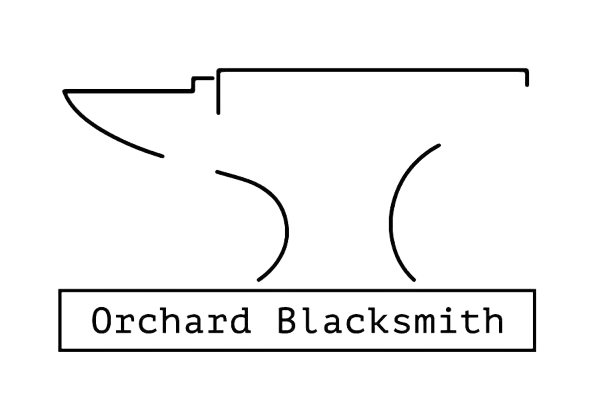Forging Is More Than Metal: Clearing Up the Misconceptions
Hand-forged metalwork is one of the oldest crafts in the world — and yet, it’s still widely misunderstood. From how it’s made to how much it costs, there are a few common misconceptions that come up again and again in conversations with customers. If you’ve ever wondered what’s really involved in forging, here’s a bit of myth-busting from behind the anvil.
1. "It’s just bent metal, right?"
This is probably the most common misconception. While forging does involve bending, it’s not the same as cold-forming or welding together pre-made parts. True forging means heating the steel until it’s red-hot and reshaping it with hammers, anvils, and tools, often one strike at a time. The result? A much stronger, more expressive, and more durable product than something simply bent or assembled.
2. "It’s basically the same as fabricated steel."
Fabrication often involves cutting and welding standard pieces together. Forging, on the other hand, is about shaping the metal while it’s hot — not just assembling parts, but creating them from scratch. This results in a different texture, feel, and strength. Think of it like comparing a hand-thrown ceramic bowl to a mass-produced one from a mold.
3. "Machines do most of the work now, right?"
There are power tools involved — grinders, presses, drills — but the heart of blacksmithing is still in the handwork. Every scroll, twist, taper, and join is guided by the craftsperson’s eye and hammer. Machines can help with efficiency, but they can’t replace the intuition or judgment of a skilled smith.
4. "It shouldn't take that long to make."
A high-quality forged piece often looks clean and simple — but that simplicity is deceiving. Behind a “simple” gate or scroll is hours of heating, shaping, measuring, adjusting, and finishing. Every element is made to fit, flow, and last — and rushing that process leads to poor results. You’re not just paying for materials — you’re paying for time, experience, and craftsmanship.
5. "Forged ironwork is old-fashioned."
It may be traditional, but forged ironwork is anything but outdated. In fact, it’s having a major resurgence in modern architecture, landscape design, and custom home builds. Whether it’s minimal and contemporary or ornamental and historic, forged work brings soul and story to a space — something flat, factory-made metal just can’t match.
6. "It’s too expensive for what it is."
This is a fair question — custom work isn’t cheap. But when you invest in forged metalwork, you’re buying something made for you, built to last for decades (or more), and crafted with care. Mass-produced pieces might look similar at first glance, but they won’t hold up over time, and they won’t carry the same attention to proportion, detail, and originality.
Final Thoughts
Forged metalwork is part utility, part art, and 100% hands-on. It’s not about churning out fast results — it’s about making something permanent, personal, and strong.
If you’ve ever been curious about the difference between handmade and factory-made metalwork, or why custom forging still matters today, feel free to reach out. I’m always happy to talk about the process — and to share why I still love working with fire, steel, and time-tested techniques
If you would like to discuss a potential project with us, please do not hesitate to contact us.
